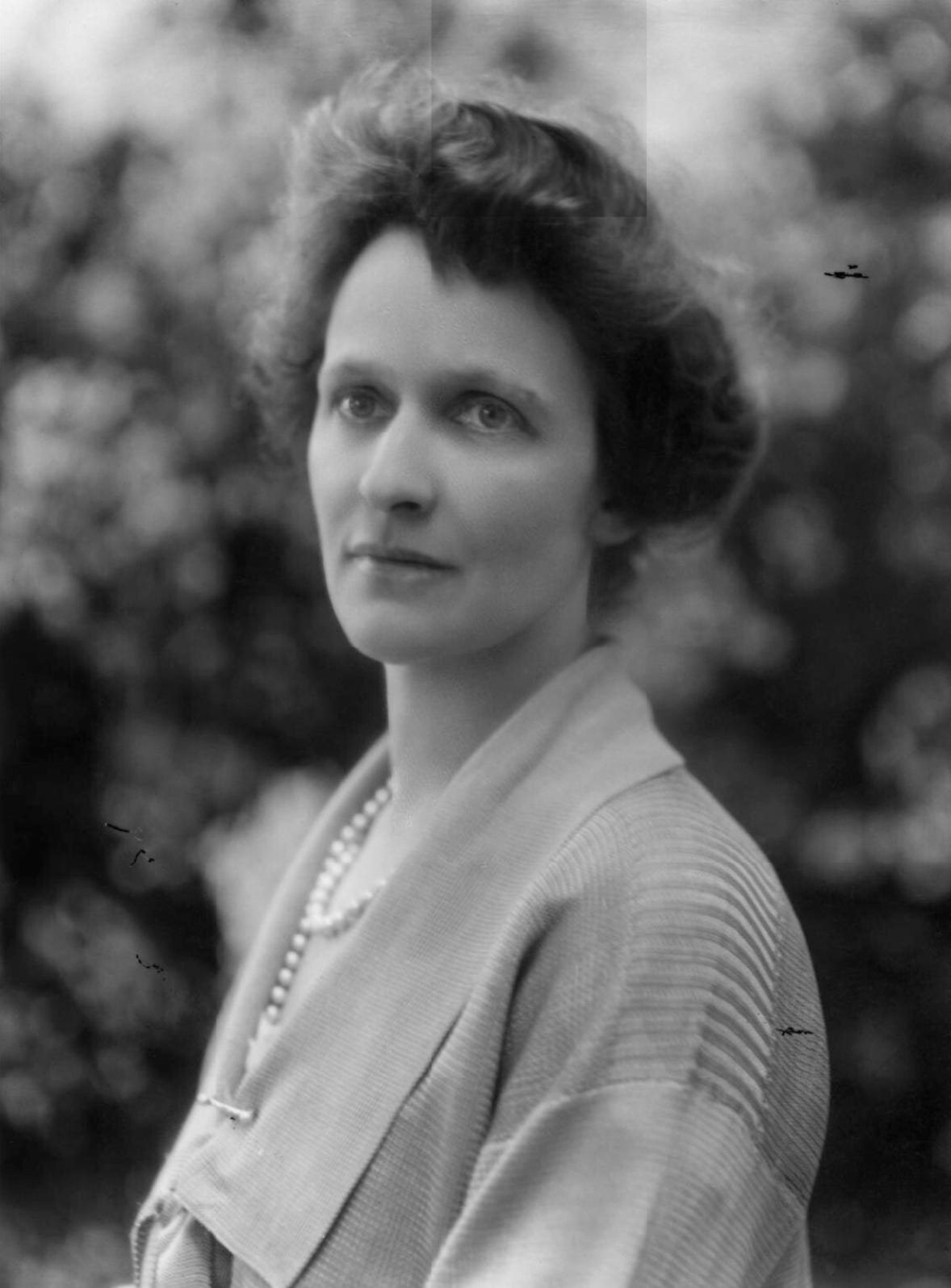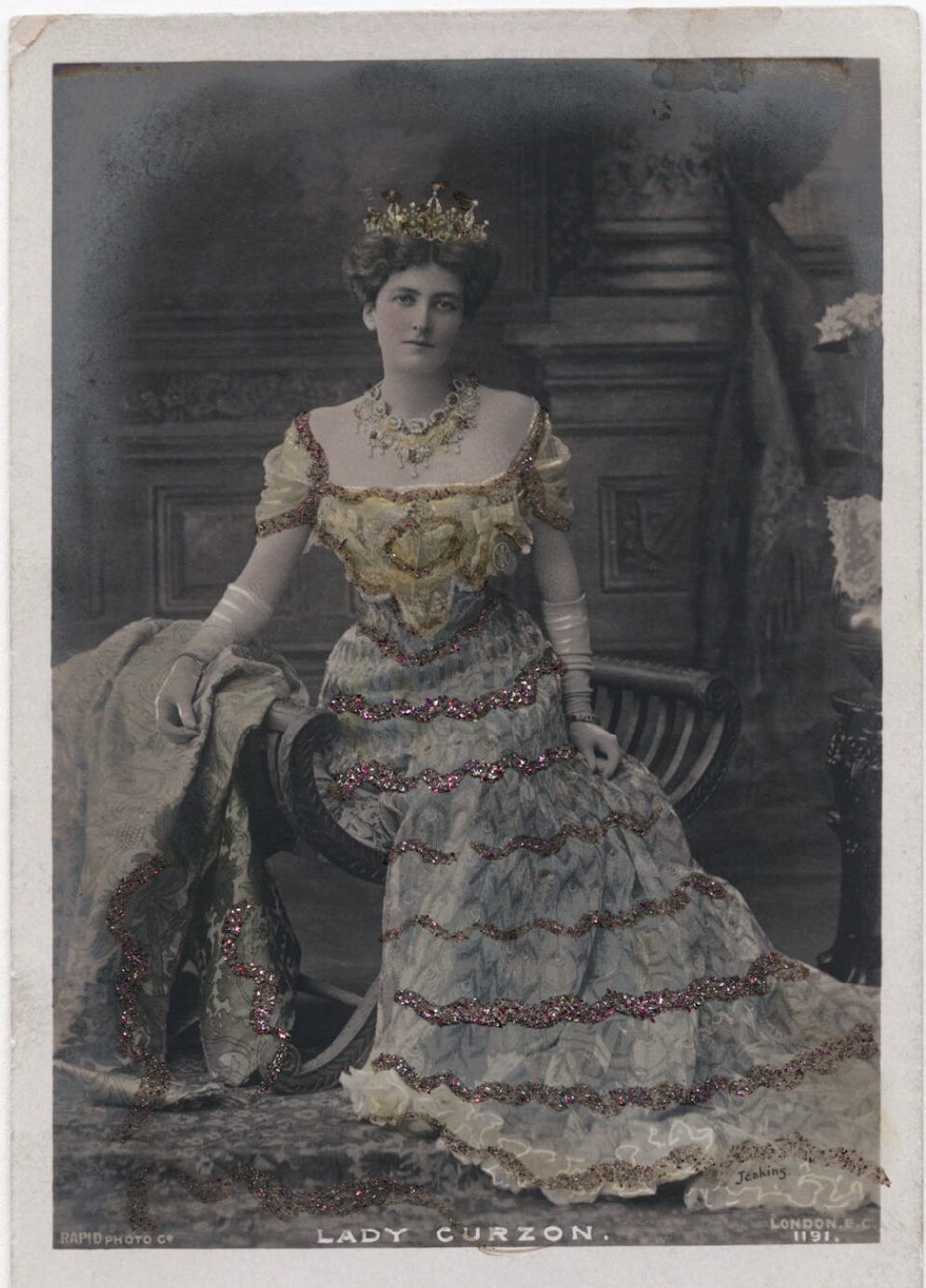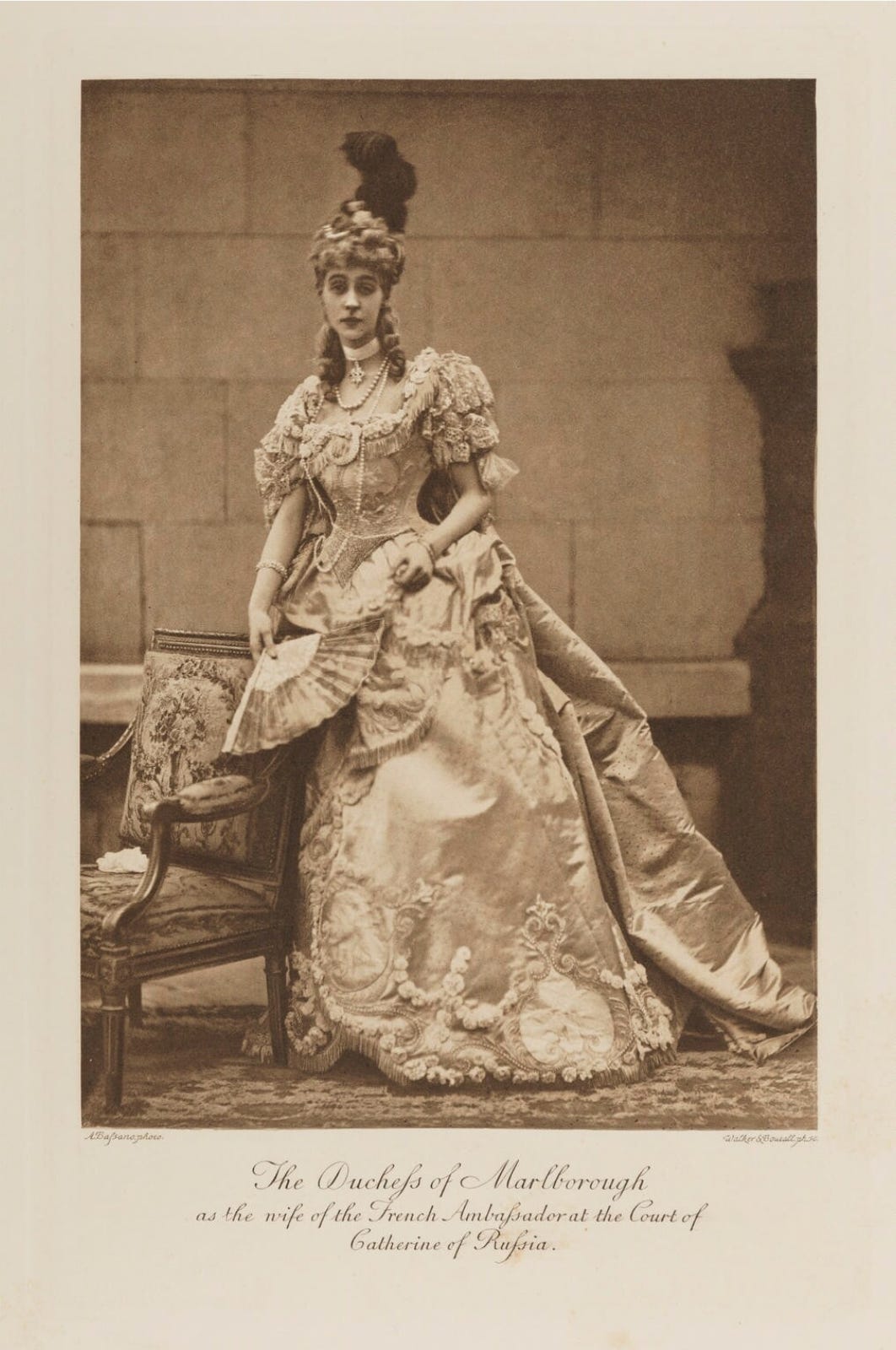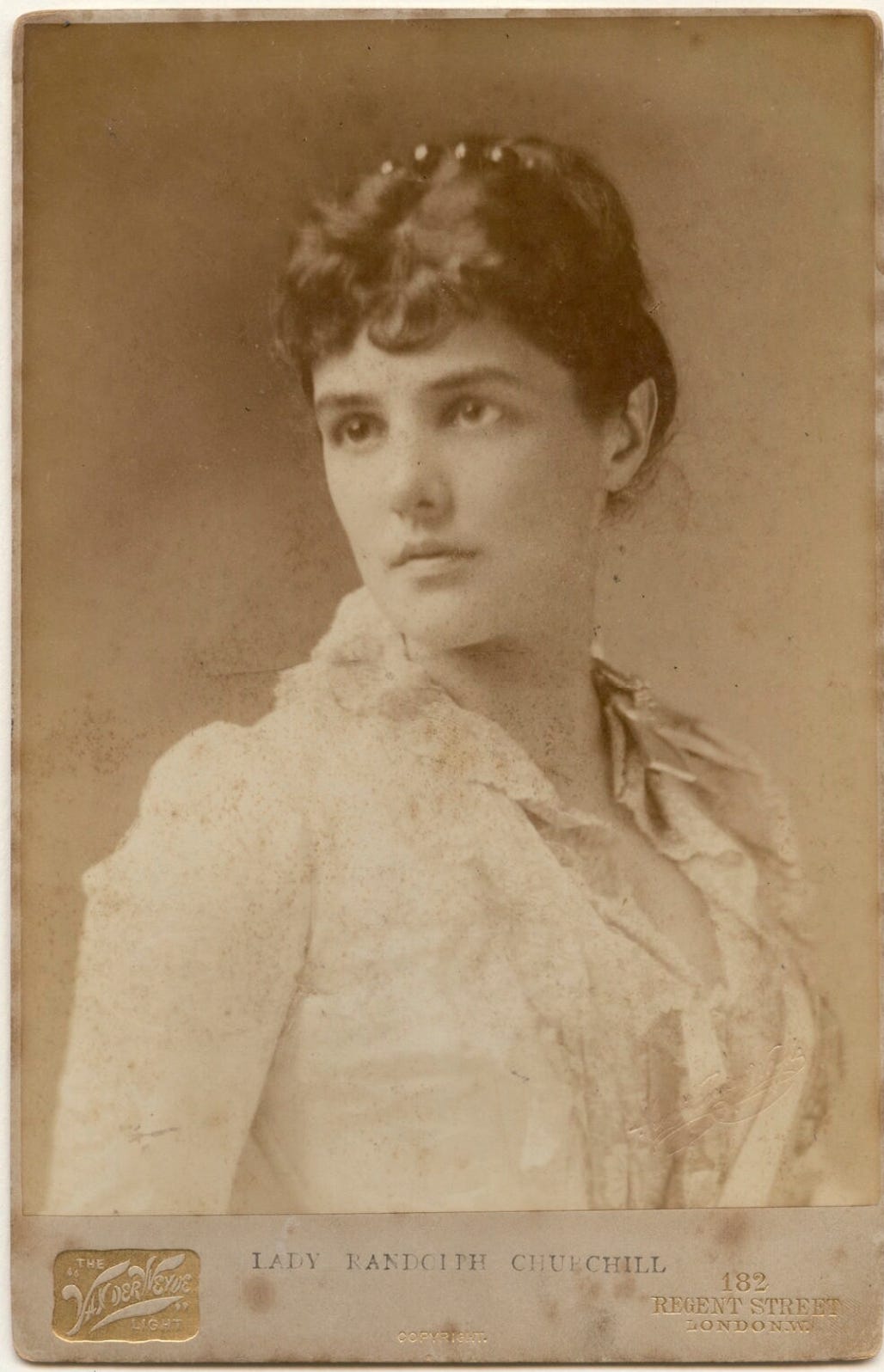Meet the American Heiresses of the Gilded Age:
Nancy Langhorne, Mary Leiter, Consuelo Vanderbilt, and Jennie Jerome
At the turn of the 20th century, an intriguing trend took hold: wealthy American heiresses crossed the Atlantic to marry into European nobility.
These women, the “Dollar Princesses,” brought with them substantial dowries that helped restore crumbling estates, revitalise British and European aristocratic titles, and bridge the gap between the “New World” wealth and “Old World” titles.
But while some of these marriages were business-like arrangements, others blossomed into genuine partnerships that shaped history.
In a previous post, I told you all about Alberta—the former Countess of Sandwich, whose treasure trove of writings we discovered at Mapperton.
Now, I’d like to introduce you to four more American heiresses of the Gilded Age: Nancy Langhorne, Mary Leiter, Consuelo Vanderbilt, and Jennie Jerome, who each left a big mark on British society.
But these intros just scratch the surface! So I’ve included some links if you’d like to get to know these women more.
Nancy Langhorne (Lady Astor): The Trailblazing Politician
(Source: National Portrait Gallery: NPG x18820)
But her life would be anything but conventional.
By the time she married Waldorf Astor in 1906 (the American-born son of Viscount Astor) , she had already experienced a short-lived first marriage that ended in divorce, which was a rarity and scandal in those days.
Known for her wit, charm, and strong opinions, Nancy became a force to be reckoned with in British society—and in politics.
Following her marriage to Astor, the family moved into the grand Cliveden House, one of the most magnificent estates in England.
Nancy’s sparkling personality and quick humour made her a social success.
But it was her keen sense of duty that truly set her apart. When her husband became a member of the House of Lords, he vacated his seat in the House of Commons, and Nancy decided to run for it.
She won, becoming the first woman to take her seat in the British Parliament in 1919.
As a politician, Lady Astor was outspoken on issues ranging from women’s rights to alcohol regulation and education. She wasn’t afraid to challenge the status quo, often speaking out against the rampant sexism she encountered in Parliament.
She famously said:
“I refuse to admit that a woman can’t make as good a member of Parliament as a man.”
And she proved this with her unwavering energy and her commitment to her constituents.
Although she had her share of critics, Nancy’s courage in a male-dominated world paved the way for future generations of women in British politics.
To learn more about Nancy, head to the Maidenhead Heritage Centre site, Historic UK (which has some incredible pictures of her!), or English Heritage, which will show you where to find her blue plaque!
Mary Leiter (Lady Curzon): The Glamorous Diplomat’s Wife
(Source: Albert Edward Jeakins, published by Rapid Photo Co
hand-coloured bromide postcard print with glitter, 1903 NPG x135953. Here’s a collection of her portraits at the National Portrait Gallery.)
Unlike some heiresses, Mary was known for her natural beauty, impeccable manners, and quiet grace.
In 1895, she married George Curzon, a rising star in British politics, and their union would prove to be one of both affection and mutual respect.
Curzon was appointed Viceroy of India in 1899, making Mary the most important woman in British India.
Known as Lady Curzon, Mary embraced her role. She captivated the Indian and British nobility alike, mastering her role as a hostess and diplomat’s wife.
At a time when British colonial rule in India was filled with tension, she aimed to foster goodwill between the British authorities and the Indian people.
She became particularly famous for her influence on fashion, including the lavish “peacock dress” she wore at the 1903 Delhi Durbar, a grand event that celebrated King Edward VII’s coronation.
Embroidered with gold and silver thread and embellished with peacock feathers, the dress became iconic, symbolising both Lady Curzon’s beauty and her understanding of Indian culture.
Mary was deeply invested in social issues, focusing on women’s health in India.
She helped establish hospitals for Indian women, known as Lady Curzon Hospitals, to ensure they received proper medical treatment.
Unfortunately, Mary’s health suffered, and she passed away in 1906 at the young age of 36.
But her legacy remains. She’s remembered as one of the most compassionate and graceful American heiresses, whose influence bridged cultures and created lasting goodwill between India and Britain.
For more, the National Trust has a lovely timeline of the Curzon family. Or read about the spectacular pieces she left behind in her will at The Court Jeweller.
Consuelo Vanderbilt (Duchess of Marlborough): The Reluctant Bride
(Source: National Portrait Gallery, by Alexander Bassano, photogravure by Walker & Boutall photogravure, 1897; published 1899 NPG Ax41116)
She’s one of the most interesting American Heiresses I’ve had the pleasure to research, and I can’t wait to tell you about her.
Consuelo Vanderbilt was one of the most famous American heiresses of her time. She was born in 1877 into the fabulously wealthy Vanderbilt family of New York.
(Click here to see her pictures at the National Portrait Gallery.)
Her mother, Alva Vanderbilt, had grand ambitions for Consuelo, seeing her daughter as the key to solidifying the family’s social position in both America and Europe.
In fact, Alva famously pressured Consuelo into marrying Charles Spencer-Churchill, the 9th Duke of Marlborough, in 1895.
The marriage was a lavish affair, but behind the scenes, Consuelo was deeply unhappy.
She was very much in love with another man, and her marriage to the Duke was not one of affection. Instead, it was carefully crafted by her mother to fulfil her own social ambitions.
Nevertheless, as the new Duchess of Marlborough, Consuelo tried to make the best of her situation. She focused her energy on philanthropy, working tirelessly to improve living conditions for the poor around Blenheim Palace, the Duke’s ancestral home, and using her position to support various charitable causes.
Despite her unhappiness, Consuelo became a beloved figure in British society. Her beauty and poise were unmatched, and her commitment to helping others endeared her to many.
She had two sons, which ensured the continuation of the Churchill line, but the marriage ultimately ended in divorce in 1921.
Free from the constraints of her title, Consuelo found a measure of happiness in her later years, marrying French aviator Jacques Balsan.
Consuelo’s story is often viewed as a cautionary tale of the perils of “Dollar Princess” marriages, but her resilience and dedication to helping others showed that she was far more than just a trophy bride.
Learn more about Consuelo at the Southampton History Museum (there are some fabulous photos on this site!), or read Amanda Mackenzie Stuart’s book, Consuelo and Alva Vanderbilt: The Story of a Mother and a Daughter in the ‘Gilded Age’.
Jennie Jerome (Lady Randolph Churchill): The Bold Matriarch
(Source: National Portrait Gallery, by Henry Van der Weyde albumen cabinet card, 1880s NPG x197266)
Jennie married Lord Randolph Churchill in 1874, and the two became one of Victorian society’s most celebrated couples. Their relationship was passionate and often turbulent, and Jennie’s glamour and influence made her a prominent social figure.
But Jennie was more than just a hostess. She was also politically savvy, and she used her connections to support her husband’s career. Plus, she deeply invested in social causes, which included supporting wounded soldiers and promoting health initiatives.
Like many women in history with famous children, Jennie’s most enduring legacy is arguably her role as Winston Churchill’s mother.
Jennie’s strong-willed, adventurous spirit was passed down to her son, who would go on to become one of Britain’s greatest leaders.
Jennie supported Winston’s ambitions, providing guidance and encouragement throughout his life. After her husband’s early death, Jennie remained a significant figure in British society.
Although Jennie came to Britain as a young heiress, her legacy is far more profound than her wealth. She shaped British politics through her son, her relationships, and her unmatched understanding of both American and British cultures.
To learn more, read this incredible piece on Jennie from the International Churchill Society, or read this brilliant piece from 1975 in The New York Times about a writer’s research into Jennie’s elusive story.
The Legacy of the American Heiresses
These American heiresses redefined what it meant to be a part of British nobility. They proved that wealth and title alone do not make one influential.
And they showed that women are much more dynamic and layered than their historical roles as wives and mothers.
Through their actions, they helped shape a modern British society that values strong, independent women who are unafraid to follow their own paths.
So, the next time you hear about the “Dollar Princesses” of the Gilded Age, remember that these women were much more than pawns in a transatlantic game of wealth and titles.
They were pioneers, philanthropists, and trailblazers whose legacies continue to inspire, reminding us of the strength it takes to shape one’s own destiny—even in the most gilded of cages.







I am in the baking space but your newsletter grabbed my attention right away. Love your work. Thanks for doing it!
I had no idea Lady Curzon died at such a young age. She accomplished so much!
Thanks for sharing!